- Home
- Encyclopedia
- The Grattan Fight: Prelude To a Generation of War
The Grattan Fight: Prelude to a Generation of War
It is Aug. 19, 1854. At a site just east of Fort Laramie, on the Oregon/California Trail along the North Platte River, the weather is hot, pleasant and clear. And this afternoon, Brevet 2nd Lt. John Lawrence Grattan, an 1853 graduate of West Point, will start a 22-year war between the U.S. Army and the Great Sioux Nation.
Thirteen years earlier, the first small emigrant party followed the North Platte River heading west to Oregon. In 1843, an estimated 1,000 emigrants made the same trip over the identical route. Two years after that, 5,000 emigrants followed what was now being called the Oregon Trail, from the Missouri River west to free and fertile farm lands in Oregon.
When gold was discovered at Sutter’s Mill northeast of Sacramento in California early in 1848, it unleashed the fabled Gold Rush of 1849. That year, approximately 30,000 forty-niners made the trek across the Northern Plains to California and Oregon.
For the first few years of its existence, relationships between emigrants and American Indians along the Great Platte River Road were generally peaceful. Emigrants were sometimes in great fear of the native people, however, and many began the journey armed to the teeth to defend themselves.
On the trail, most contacts were with Indians asking for “presents”–small quantities of foodstuffs or luxury items such as cloth, coffee and tobacco. These were essentially tolls that tribespeople sought for permitting the emigrants to traverse their land—and to kill the game, cut the wood and graze the grass that grew along it.
After the Gold Rush began, traffic on the trail increased enormously and tensions between whites and Indians increased along with it. Traffic was heaviest during the traveling season; the annual surge of emigrants lasted just four to eight weeks in late spring and early summer, before the travelers moved along into the sunset. Later in the summer, most westbound travelers were Mormons bound for Utah—a shorter distance that allowed them to make a later start.
In 1848, the Army established Fort Kearny at the head of Grand Island in what’s now Nebraska on the south bank of the North Platte River.[1] The next year, the U.S. Army purchased a small trading post at the junction of the Laramie and North Platte Rivers, and permanently established Fort Laramie as a military post.
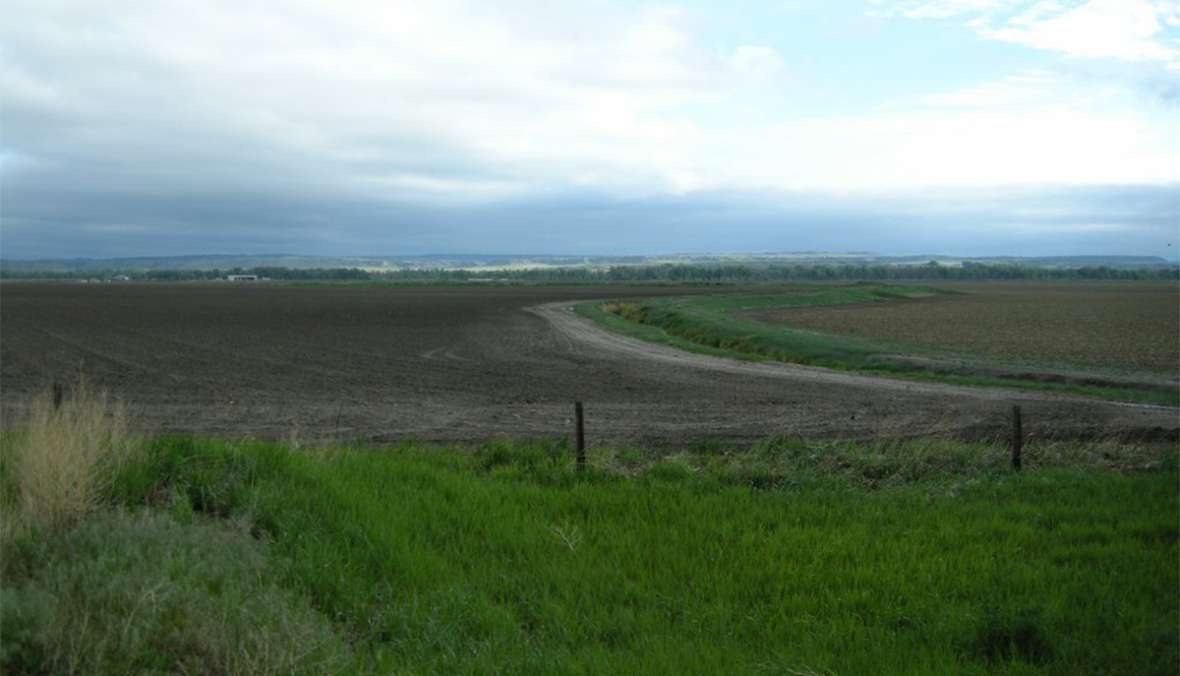

Tensions rise
Trail traffic peaked in 1850, when 50,000 gold seekers traveled to California and 10,000 land seekers went to Oregon. Numbers stayed high in the following years. Businesses sprang up along the trails to serve the emigrants. By 1854, little trading operations served the travelers every 15 or 20 miles along the Platte.
Many diarists report a chronic nervousness as Indian people would travel with them for days at a time, wanting to make trades, curious about their lives, tools, kitchen and traveling gear. As traffic increased, requests for tolls became demands; demands became threats.
Trouble at Platte ferry
The year of 1853 found Fort Laramie occupied by a small, single-company garrison. The commander, 2nd Lt. Richard B. Garnett, enjoyed at least better relations with the Indians around the fort than did some of his successors in the job. That summer, a large party of Minniconjou Sioux were camped at the Platte Ferry—current location of the historic Fort Laramie Iron Bridge, built in 1875—on the north side of the North Platte River. The Minniconjou had come into the area more recently and were not as well known around the fort as were the Oglala and Brule Sioux, who had been trading at the fort and nearby posts for a decade and a half.
The Minniconjou intermittently harassed passing emigrants, being particularly aggressive in demanding their tolls. At the ferry on June 15, an altercation broke out between an infantry sergeant stationed there and a Minniconjou warrior. A shot was fired at the sergeant as the soldier was crossing the river in the ferry boat. Whether the Indian man was shooting into the water to intimidate the sentry, or he simply missed, was unclear.
In response, Lt. Garnett dispatched Brevet 2nd Lt. Hugh B. Fleming and 22 men of his company to arrest the Minniconjou, or to take hostages if the man could not be found. This was Fleming’s first opportunity for independent command, as he had just arrived fresh from graduation from West Point.
Two young West Point graduates
The U.S. Military Academy takes great pride in the ranks of military and political leaders it has produced, among them the generals Robert E. Lee, Ulysses S. Grant, William T. Sherman, Philip H. Sheridan, John J. Pershing, Dwight D. Eisenhower, George S. Patton and Norman Schwarzkopf. Grant and Eisenhower also became presidents of the United States.
The classes of 1852 and 1853 were among West Point’s most productive. The class of 1852 graduated acclaimed military leaders George Crook (of Indian War fame), and Civil War Union officers Henry Slocum (XII and XX Corps commander), David Stanley (IV Corps commander who made major contributions to the defeat of Confederate General John B. Hood and his Army of Tennessee in 1864), and Alexander McCook (a Corps commander in the Union’s Army of the Cumberland). The class of 1853 produced Union officers James McPherson (Commander of the Army of the Tennessee), Joshua Sill (killed at the Battle of Stones River, Philip Sheridan and John Schofield (both Chiefs of Staff of the U.S. Army), and Confederate generals Alexander Chambers and John Bell Hood.
The careers of Hugh Brady Fleming and John Grattan were less accomplished.
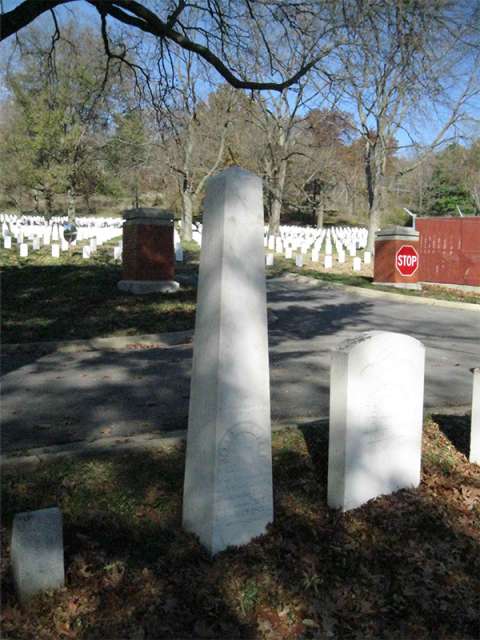
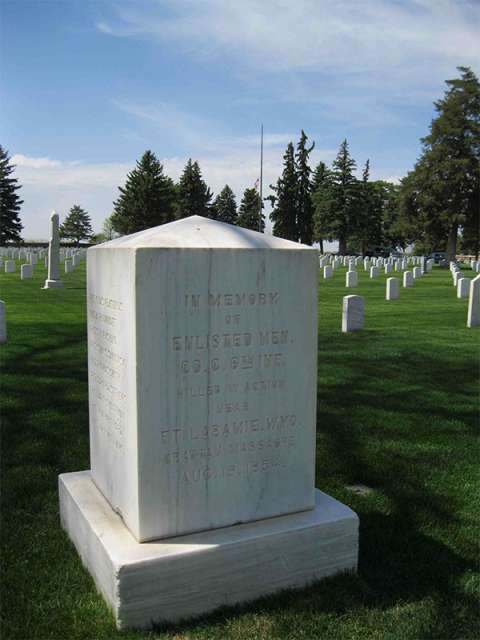 Both entered West Point in July 1848, Grattan at age 18 and Fleming at 19 years old, aiming to graduate in 1852. Grattan flunked mathematics his first year, however, and recycled to the class of 1853. His next four years were undistinguished. In his senior year his poorest marks were in infantry tactics; he finally managed to graduate ranked 36th out of 52 cadets.
Both entered West Point in July 1848, Grattan at age 18 and Fleming at 19 years old, aiming to graduate in 1852. Grattan flunked mathematics his first year, however, and recycled to the class of 1853. His next four years were undistinguished. In his senior year his poorest marks were in infantry tactics; he finally managed to graduate ranked 36th out of 52 cadets.
Fleming had been appointed from Crawford County in northwestern Pennsylvania. His father had served with distinction during the War of 1812 and enjoyed a laudable career in the U.S. Army. As a sophomore Fleming accumulated 66 demerits. As senior cadet, his poorest marks were in infantry and artillery tactics. He graduated from West Point with the class of 1852, ranked 29th out of 43 cadets commissioned. He was assigned to Company G, 6th Infantry at Fort Laramie in the Wyoming Territory.
As it turned out, both Fleming and Grattan would have done well to spend more time learning infantry and artillery tactics.
Attack on the Minniconjou village
On June 17, 1853, two days after the trouble at the ferry, Fleming marched two dozen men into the Minniconjou village to demand the supposed culprit —or several other prisoners as substitutes. Shooting broke out, the warriors retreated to the far side of the village and three were killed, with not a single soldier killed or wounded. Fleming returned across the North Platte River to Fort Laramie with two Minniconjou women captives.
In negotiations in the following days, Garnett said he was willing to forget what had happened and make amends. The Minniconjou saw nothing to be gained in escalating hostilities, although they greatly outnumbered the small Army command. The prisoners were released.
Conquering Bear, a well-regarded Brule Sioux chief who enjoyed good relations with the army garrison, assured Garnett that the rest of Sioux were friendlier than the Minniconjou. Relations between the soldiers and all the nearby Sioux bands began to deteriorate, however.
For his part, Fleming received commendation for his leadership. But nearly all the Minniconjou men had been away hunting; Fleming had led an attack upon a largely undefended village. Unfortunately, both Fleming and the Army believed afterward that even a small force of regulars could defeat the Indians, a belief that clearly influenced Fleming’s future actions at Fort Laramie. He had drawn the wrong lessons from this minor action.
And probably none of the officers understood that the Treaty of Fort Laramie, signed just three years before between the federal government and the tribes of the northern plains, gave no jurisdiction over individual Indians to U.S. civil or military authorities, notes historian Remi Nadeau. The treaty left responsibility for dealing with miscreants in the hands of the tribes; if there was a violation, the tribes were to be held collectively responsible, and officers or Indian agents were expected to negotiate accordingly.
Time and again, however, the Army set out to arrest individuals or take hostages. For their part, the tribes saw capture as a prelude to death—that was how their warfare worked—and so they often resisted arrest or capture at all costs.
Throughout 1853 and 1854, Fort Laramie and the entire U.S. Army on the western frontier were woefully understrength. When Garnett was re-assigned, Fleming became commander of the single Company G of the 6th Infantry still stationed at the fort—and post commander as well.
Grattan arrived in the fall of 1853. Fleming, a year older than his subordinate, a classmate of his during their plebe year together at West Point and his superior in the Army by only a single year, was only slightly more experienced than Grattan.
And Grattan seemed to fit the stereotype of the worst West Pointers. He was brash and arrogant and he despised the Indians that lived around or regularly visited Fort Laramie. He repeatedly bragged that with 10 men he could conquer the entire Indian nation.
He would soon get his chance to prove his boasts.
A sick cow and a confrontation
On Aug. 18, 1854, a sick cow lagged behind a Mormon wagon train as it passed Fort Laramie heading for Utah Territory. Large, separate camps of Minniconjou, Brule and Oglala Sioux Indians were nearby that summer, waiting for distribution of their annuities—their annual government payments in beef and other goods as part of the terms of the treaty signed three years before.
With their promised rations late, their pony herds eating up all the available grass and most of the local game long since exhausted, the people were hungry. The sick cow ended up in in a Brule Sioux camp, where she was killed by a visiting Minniconjou warrior, High Forehead, and ended up as dinner. The emigrant reported his loss to Fleming, perhaps hoping that the Army would issue him a free replacement. He then moved on, vanishing nameless from history.
Fleming did nothing about it for a day, during which Conquering Bear came to the fort and named High Forehead as responsible for the theft. Conquering Bear offered either a horse or mule in restitution for the cow—a pretty good deal for the time, and certainly evidence of his good faith. Fleming said he would wait for the arrival of the Indian agent to negotiate a solution
But Grattan was eager for confrontation. On the 19th, he urged his superior officer to send him to the village. After a long, loud argument Fleming finally agreed, and authorized Grattan to take 22 men. Grattan asked for volunteers.
Had Fleming turned the entire affair over to the local Indian agent, had he agreed to compensation from High Forehead through Conquering Bear by accepting the horse or mule—or even led the party himself—the entire mess could have been avoided. But good judgment was scarce at Fort Laramie on the hot afternoon of Aug. 19.
Further, Fleming may have had little control over Grattan, as both were nearly the same age, had attended the same West Point class their first year, and with Fleming carrying only a single year’s seniority. No other officers were available. Grattan was dispatched, perhaps with some guidance and direction from Fleming.
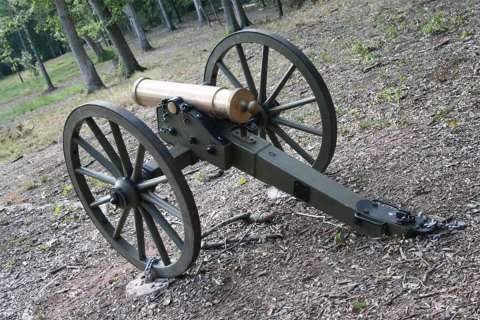
Lt. Grattan took two sergeants and 27 enlisted men with him to arrest High Forehead, along with a 12-pounder mountain howitzer and a 12-pounder Napoleon howitzer.
Making things worse, Lt. Grattan was accompanied by Lucian Auguste, an interpreter who appears to have made himself unpopular in the area with Indians and whites alike. He had been humiliated a few weeks before when some Cheyenne had stolen some of his cows. With a posse of French-speaking traders he chased them, but when the warriors offered a fight, the posse halted out of rifle range and the Cheyenne went on their way. Grattan later ridiculed Auguste and his friends, loudly, for their apparent cowardice.
On the afternoon of the 19th, Auguste was reluctant to go, took a long time to get ready, acquired some whiskey and began drinking before he left.
Attack on the Brule village
The little detachment left the fort about 3 p.m. and headed downriver toward the villages. The infantrymen rode in a wagon and on the limbers of the two howitzers— the two-wheeled carts that support the tail of the gun. According to at least one account they, too, were passing a bottle as they rode.
After about an hour, the troops arrived at the American Fur Company houses where all the annuity goods were stored. Here the Oglala village stretched along the river for three-quarters of a mile. Beyond it, in a shallow loop of the North Platte, lay the huge Brule village of around 700 lodges —about 4,200 people, including perhaps 1,000 warriors.
Grattan ordered his soldiers to load their muskets and fix bayonets, and led his soldiers past the Oglala village to the trading houses of James Bordeaux at the Brule village. Auguste, now drunk, began shouting threats and insults in all directions.
At Grattan’s urging, Bordeaux sent for Conquering Bear. Grattan demanded the chief deliver High Forehead, so that he could be taken back to the fort and held until the Indian agent arrived. Conquering Bear stalled and procrastinated, went back to his lodge for the general’s uniform presented him at the treaty negotiations three years earlier and returned—at which point a messenger arrived saying High Forehead would resist even if it meant death.
More demands, more stalling and refusals followed; Grattan ordered his men to load the howitzers and advanced toward the center of the Brule village—Auguste continuing his rants in Sioux the whole time. Out of sight of the soldiers, hundreds of warriors were already stripped for battle.
Grattan marshaled the troops in a line facing Conquering Bear’s lodge, the two howitzers in the center, and repeated his demand. Again, the chief offered a mule in restitution. Grattan pulled out a pocket watch and snarled, “It is getting late and I can’t wait any longer.” Conquering Bear said it was out of his hands; if Grattan wanted High Forehead, the troops would have to use force.
Bordeaux later reported he saw one man on the right-hand end of the line fire his musket into a group of Indians at the lodge; one fell. There was a long pause. Someone, perhaps Conquering Bear, shouted that that was enough; perhaps the soldiers would be ready to leave now. Then, soldiers on the left side of the line fired. Then the two howitzers fired, but high; the grapeshot hitting only the tops of the lodgepoles.
Surrounded as the soldiers were, the fight didn’t last long. Grattan’s body would later be found with 24 arrows in it, including one through his head. His body had to be identified by his pocket watch. His two sergeants attempted a fighting withdrawal, but within about 10 minutes Grattan, the interpreter and his entire detachment had been wiped out. One wounded man escaped and started back for the fort, later returned to the trading houses and finally died at the fort a few days later.
In the fray, Conquering Bear, exposed and vulnerable at the head of his village, was shot three times and mortally wounded; he would die several days later. Angry warriors raided the Fort Laramie vicinity, plundered the local traders of their stores, and trapped Lt. Fleming and the remaining soldiers inside the fort for a couple of days, running off the fort’s entire animal herd.
War for a generation
Fleming later noted in his official report that Grattan had been “rash and impulsive almost beyond belief.” But it had been Fleming who dispatched Grattan on his venture, and had authorized his course of action. And it had been the Army itself that had chosen to leave Fort Laramie in the hands of a single company of infantry and two officers barely out of their teens. Fleming would have no more independent commands his entire career: He was never again trusted by the Army. Though he would retire as a major, his subsequent career was undistinguished.
Previously, the Sioux nations and the incoming Euro-Americans had enjoyed fairly good relations. With Grattan’s and Fleming’s actions that day, good relations ended. Twenty-two years of intermittent conflict, accompanied by horrific bloodshed and terrible suffering on both sides, erupted.
A sick cow, a hungry Minniconjou warrior, and a pair of West Pointers had just ignited war on the frontier of the Northern Plains.
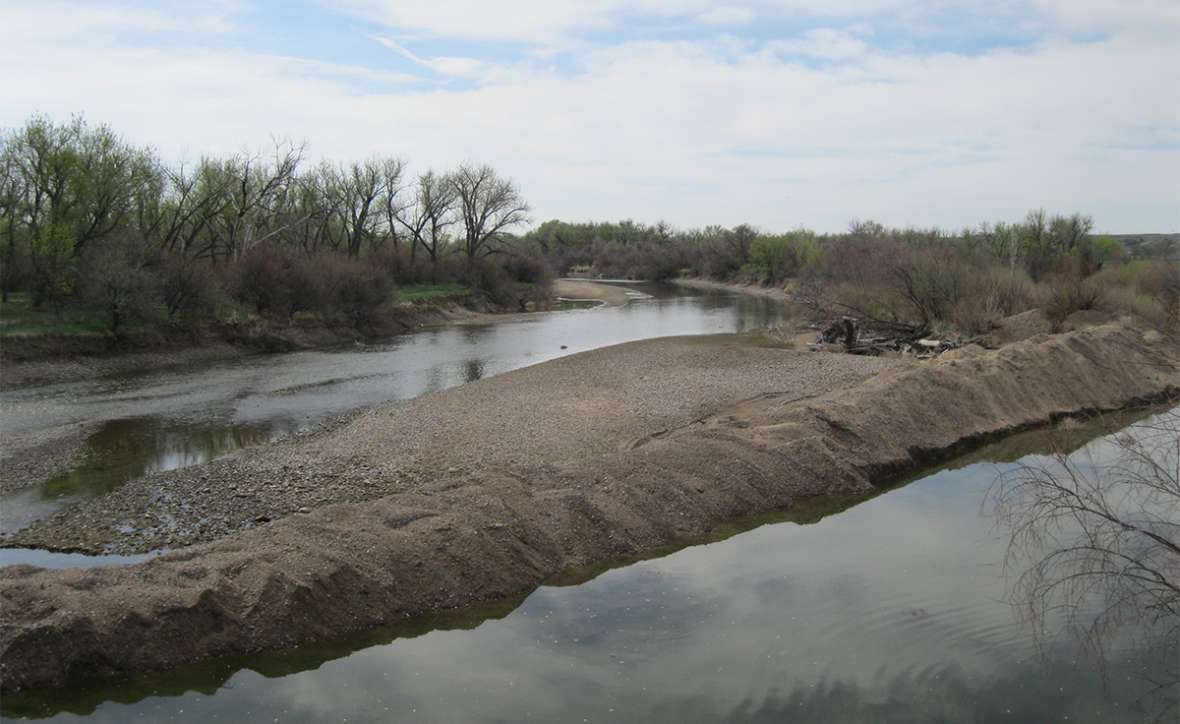
Resources
Primary sources
- Cadet records, Special Collections and Archives, Jefferson Hall, U.S. Military Academy Library, West Point, New York.
- Fay, George D., editor. Military Engagements Between United States Troops and Plains Indians: Part Ia : Documentary Inquiry by the U.S. Congress, 1854-1867. Occasional Publications in Anthropology, Ethnology Series No. 26. Greeley, Colorado: Museum of Anthropology, University of Northern Colorado, 1972.
- Major Hugh B. Fleming Appointment, Commissioning and Promotion (ACP) File, Record Group 94.3, National Archives and Records Administration, Washington, D.C.
Secondary sources
- Hedren, Paul and Carroll Friswold. The Massacre of Lieutenant Grattan and his Command by Indians. Glendale, California: The Arthur H. Clark Company, 1983.
- Mattes, Merrill J. The Great Platte River Road. University of Nebraska Press, 1969.
- McCann, Lloyd E. “The Grattan Massacre” Nebraska History (March 1956), 1-25.
- McChristian, Douglas C. Fort Laramie: Military Bastion of the High Plains. Norman, Okla.: Arthur H. Clark Co., 2008.
- Nadeau, Remi. Fort Laramie and the Sioux. Lincoln, Neb.: University of Nebraska Press, 1967, 83-110.
Illustrations
- The photo of the battlefield is by Max Farrar from Panoramio. Used with thanks.
- The photo of the howitzer is by Mike Kendra, from CivilWarWiki. Used with thanks.
- The rest of the photos are by the author. Used with permission and thanks.
[1] Fort Kearny at Grand Island, Nebraska Territory, named for then Colonel Stephen Kearny of the U.S. Dragoons, should not be confused with Fort Phil Kearny on the Bozeman Trail, Wyoming Territory, established in 1866 and named for Major General Philip Kearny, killed in Virginia at the Battle of Chantilly in 1862.
